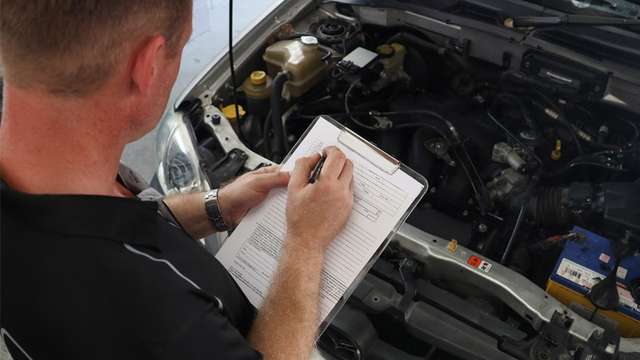- top tips
What's the difference between a safety inspection and a pre purchase inspection?

Updated 8 Oct 2019
Lindsay Saunders

Paperwork. Few of us love it but for your peace of mind and safety, it’s a necessary evil when purchasing a new car and, in many states of Australia, keeping it on the road legally.
For would-be buyers, especially in the used market, pre-purchase inspections and roadworthy certificates are the most often discussed bits of said paper– but there’s quite a difference between the two.
Roadworthy certificates (RWC), also known as safety certificates are, by and large, a legal requirement in most states of Australia, and are often required annually as part of the registration process as well as being part of the selling and buying procedure.
There are exceptions of course.
Queensland, for example, does not require an annual RWC, however the laws and requirements from state to state vary incredibly.
For example, in the Northern Territory, vehicle roadworthy inspections for light vehicles are required once the vehicle is five years old, 10 years old, then annually.
Vehicles five years or older, seeking registration in the NT for the first time, require a roadworthy inspection.
All vehicles over 10 years old require a roadworthy inspection every year. Phew.
The best bet if, for example, you are moving or buying from interstate and are unsure what’s required, is to contact the relevant authority in that state.
But in all cases, whether it be part of the annual rego process or as part of selling/buying a vehicle, RWCs are basically a safety checklist filled out by an authorised agent, who checks on such elements as brakes, seat belts, lights, etc, to ensure the vehicle meets the standards and requirements laid out by that state’s legislation.
All well and good, but you really can’t rely on the RWC if you are buying a pre-owned vehicle – they may be an indicator of a vehicle’s condition, but they are not an overall inspection of the vehicle.
That’s where a pre-purchase inspection comes in.
A reputable mechanic’s pre-inspection – or one via a state motoring body such as the NRMA - is a detailed look at the vehicle, covering everything from the condition of the paint to a compression check on the motor to a road test checking handling, braking and wheel alignment to the condition of the transmission – and a lot more.
At the end of the process, you will be presented with a condition report that will identify any problems, current or potential, and, in many cases, an estimate of the cost of repairing such issues, as well as a timeline on when it’s likely they’ll be needed.
As you can imagine, that’s handy information to have before you buy a car – are you getting a good deal or buying someone else’s issues?
Pre-inspection reports, unsurprisingly, cost money.
However, unless you are an expert (no, really an expert), getting the advice from someone who is surely makes sense.
And we don’t mean your cousin’s mate Nev who ‘knows a bit about cars and stuff’.
The report will allow you to make a truly informed decision about your purchase – you may have decided on the vehicle in large part due to your heart, but a pre-inspection report means your head gets in on the action too, and gives you the best chance of avoiding post-purchase regret and getting stuck with a money pit on wheels.
If you’re in need of either a roadworthy or Pre-Purchase Inspection, we’ve got good news!
AutoGuru can quickly and easily help you find a local, high-quality mechanic, and you book them in online in an instant! Boom!

Written By
Lindsay Saunders
Lindsay Saunders has been writing, editing and producing words and photos for more than three decades, starting back when he drove a 1971 VW Type 3 fastback.
Now he’s got a Hyundai I30 diesel, a 1999 LWB Hi-Ace (camper project) and wishes his wife’s EJ Holden station wagon was actually his.